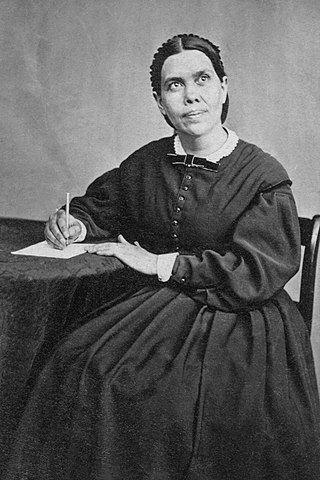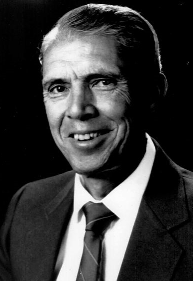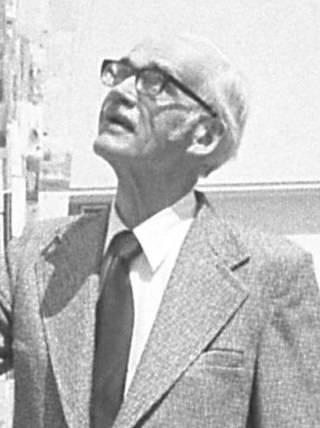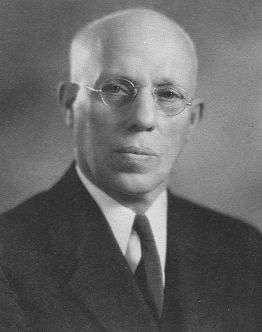
Ellen Gould White was an American author and co-founder of the Seventh-day Adventist Church. Along with other Adventist leaders such as Joseph Bates and her husband James White, she was influential within a small group of early Adventists who formed what became known as the Seventh-day Adventist Church. White is considered a leading figure in American vegetarian history. Smithsonian named her among the "100 Most Significant Americans of All Time".

Desmond Ford was an Australian theologian who studied evangelicalism.

The Seventh-day Adventist Church had its roots in the Millerite movement of the 1830s to the 1840s, during the period of the Second Great Awakening, and was officially founded in 1863. Prominent figures in the early church included Hiram Edson, Ellen G. White, her husband James Springer White, Joseph Bates, and J. N. Andrews. Over the ensuing decades the church expanded from its original base in New England to become an international organization. Significant developments such the reviews initiated by evangelicals Donald Barnhouse and Walter Martin, in the 20th century led to its recognition as a Christian denomination.
Criticism of the Seventh-day Adventist Church includes observations made about its teachings, structure, and practices or theological disagreements from various individuals and groups.
Last Generation Theology (LGT) or "final generation" theology is a religious belief regarding moral perfection achieved by sanctified people in the last generation before the Second Coming of Jesus. It was a concept that had its origins in the beliefs and teachings of Seventh-day Adventist Church pioneers, and there are verses in scripture in texts such as 2 Corinthians 7:1, Matthew 5:48, and many others. Seventh-day Adventists hold that there will be an end-time remnant of believers who are faithful to God, which will be manifest shortly prior to the second coming of Jesus, as suggested by the 144,000 saints described in the Book of Revelation of the New Testament.
Herbert Edgar Douglass Jr. was a Seventh-day Adventist theologian. He was born in Springfield, Massachusetts, US, the oldest of five children to Herbert Edgar Douglass Sr (1904–1983) and Mildred Jennie Munson (1908–1988). He earned his Doctorate in Theology at Pacific School of Religion in 1964.

The Seventh-day Adventist Church holds a unique system of eschatological beliefs. Adventist eschatology, which is based on a historicist interpretation of prophecy, is characterised principally by the premillennial Second Coming of Christ. Traditionally, the church has taught that the Second Coming will be preceded by a global crisis with the Sabbath as a central issue. At Jesus' return, the righteous will be taken to heaven for one thousand years. After the millennium the unsaved cease to exist as they will be punished by annihilation while the saved will live on a recreated Earth for eternity.
The theology of the Seventh-day Adventist Church resembles early Protestant Christianity, combining elements from Lutheran, Wesleyan-Arminian, and Anabaptist branches of Protestantism. Adventists believe in the infallibility of the Scripture's teaching regarding salvation, which comes from grace through faith in Jesus Christ. The 28 fundamental beliefs constitute the church's current doctrinal positions, but they are revisable under the guidance of the Holy Spirit, and are not a creed.

Harold Marshall Sylvester Richards Sr., commonly known as H. M. S. Richards, was a well-known Seventh-day Adventist evangelist and author.
The 1888 Minneapolis General Conference Session was a meeting of the General Conference of Seventh-day Adventists held in Minneapolis, Minnesota, in October 1888. It is regarded as a landmark event in the history of the Seventh-day Adventist Church. Key participants were Alonzo T. Jones and Ellet J. Waggoner, who presented a message on justification supported by Ellen G. White, but resisted by leaders such as G. I. Butler, Uriah Smith and others. The session discussed crucial theological issues such as the meaning of "righteousness by faith", the nature of the Godhead, the relationship between law and grace, and Justification and its relationship to Sanctification.

Seventh-day Adventists Answer Questions on Doctrine is a book published by the Seventh-day Adventist Church in 1957 to help explain Adventism to conservative Protestants and Evangelicals. The book generated greater acceptance of the Adventist church within the evangelical community, where it had previously been widely regarded as a cult. However, it also proved to be one of the most controversial publications in Adventist history and the release of the book brought prolonged alienation and separation within Adventism and evangelicalism.
Historic Adventism is an informal designation for conservative individuals and organizations affiliated with the Seventh-day Adventist Church who seek to preserve certain traditional beliefs and practices of the church. They feel that the church leadership has shifted or departed from key doctrinal "pillars" ever since the middle of the 20th century. Specifically, they point to the publication in 1957 of a book entitled Seventh-day Adventists Answer Questions on Doctrine; which they feel undermines historic Adventist theology in favor of theology more compatible with evangelicalism. Historic Adventism has been erroneously applied by some to any Adventists that adhere to the teachings of the church as reflected in the church's fundamental beliefs such as the Sabbath or the Spirit of Prophecy. They misapply those who hold to mainstream traditional Adventist beliefs as synonymous with Historic Adventist.

Milian Lauritz Andreasen, was a Seventh-day Adventist theologian, pastor and author.

Ellet Joseph "E.J." Waggoner was a Seventh-day Adventist particularly known for his impact on the theology of the church, along with friend and associate Alonzo T. Jones at the 1888 Minneapolis General Conference Session. At the meeting of the General Conference of Seventh-day Adventists Ellet J. Waggoner along with Alonzo T. Jones presented a message on justification supported by Ellen G. White, but resisted by church leaders such as G. I. Butler and others. He supported theological issues such as the meaning of "righteousness by faith", the nature of the Godhead, the relationship between law and grace, and Justification and its relationship to Sanctification.

Edward E. Heppenstall was a leading Bible scholar and theologian of the Seventh-day Adventist Church. A 1985 questionnaire of North American Adventist lecturers revealed Heppenstall was the Adventist writer who had most influenced them.
Shut-door theology was a belief held by the Millerite group from 1844 to approximately 1854, some of whom later formed into the Seventh-day Adventist Church. It held that as William Miller had given the final call for salvation, all who did not accept his message were lost. The door of salvation was shut, hence the term "shut door". They later understood it was concerning the sanctuary and not the events on earth so abandoned their earlier understanding. As an interpretation of the year "1844", it was connected to the investigative judgment belief, which forms one of the official 28 Fundamentals beliefs today.
Morris L. Venden was a prominent Seventh-day Adventist preacher, teacher, and author, who was also a member of the Voice of Prophecy team as an associate speaker.

Josiah Litch was a Methodist Episcopal preacher in the New England region of the United States, who was best known for his connections with the Millerite movement, and for using Bible prophecy to predict a loss of power for the Ottoman Empire.
The Pillars of Adventism are landmark doctrines for Seventh-day Adventists. They are Bible doctrines that define who they are as a people of faith; doctrines that are "non-negotiables" in Adventist theology. The Seventh-day Adventist church teaches that these Pillars are needed to prepare the world for the second coming of Jesus Christ, and sees them as a central part of its own mission. Adventists teach that the Seventh-day Adventist Church doctrines were both a continuation of the reformation started in the 16th century and a movement of the end time rising from the Millerites, bringing God's final messages and warnings to the world.
Michael W. Campbell is a Seventh-day Adventist historian, theologian, pastor, and educator. In 2022 he was appointed director of archives, statistics, and research at the North American Division of Seventh-day Adventists.









